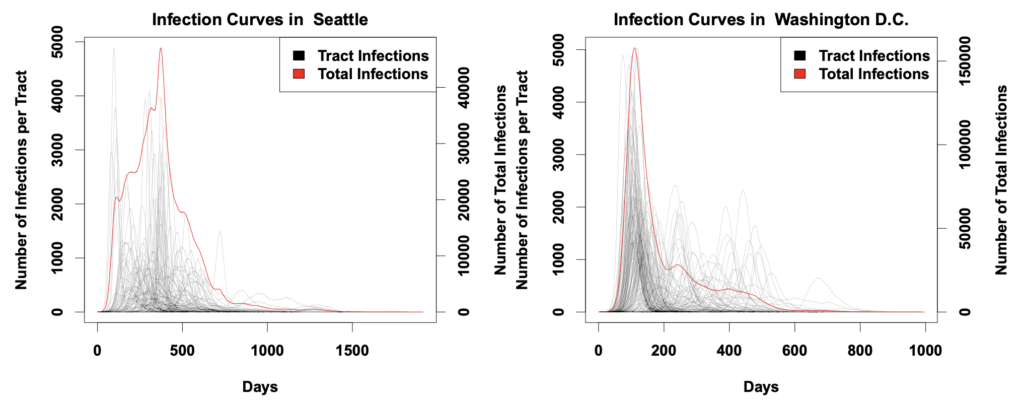The COVID-19 pandemic has taken the world by storm and has changed the way that the world operates. The biggest concern with this dangerous virus is how easily it spreads when protocols aren’t being followed. The University of California, Irvine (UCI), studied the way the COVID-19 virus affects different communities because of how population is distributed. Spatial heterogeneity is a term that describes an uneven distribution in a region; in this case, it refers to the population distribution in different cities in the United States.
The major result from the investigation is that spatial heterogeneity in population distribution causes COVID-19 to affect different places in various ways.
The study was based on network models of 19 American cities, creating using census data. 10 executions of a COVID-19 diffusion simulation were done on the models to observe how the curves of infection form. It was found that the virus spread in “bursts”, where it would transmit rapidly in a community and stall once it reached the edges of the area. An example of the curves obtained can be seen below (Fig. 1) where individual census tract and total infections are calculated.

Carter Butts, a sociology professor at UCI was a part of the group conducting this study. He talks about social networks, which we are studying in class, and how they relate to the spread of the COVID-19 virus. He speaks on the uniqueness of social networks and how the difference in a network changes how a virus spreads and affects a community. It was cool to note that viral transmission can vary even if different regions are enforcing the same policies to minimize the spread. Some communities tend to lag behind others which gives them a false sense of security, making them comfortable and letting their guard down to a potential infection. This leads to hospitals and other healthcare institutions may not prepare sufficiently when it comes to requesting equipment and creating space for COVID-19 patients. On the other hand, a lag in cases provides a chance to prepare for the eventual sudden surge of cases.
Currently experiencing life in a pandemic, this study really peaked my interest. Learning about networks in class and seeing an application of them in the real world really helps to understand them better. It conveys how diverse and unique our world is, as no 2 networks are the same. This investigation from UCI is also key to the current fight against COVID-19 because it shows there’s a connection between our social networks, and the spread of this virus. The more we know about how it spreads, the better we’ll be able to handle it and minimize its wrath.
The publication of the study conducted can be found here: https://www.pnas.org/content/pnas/117/39/24180.full.pdf
One reply on “Population Distribution and COVID-19 Spread”
Even though we already knew the basics of how the virus travels from person to person, it was interesting to read about the role of uneven distribution of population. I wonder how we can leverage this data to allow hospitals to better prepare for another wave.